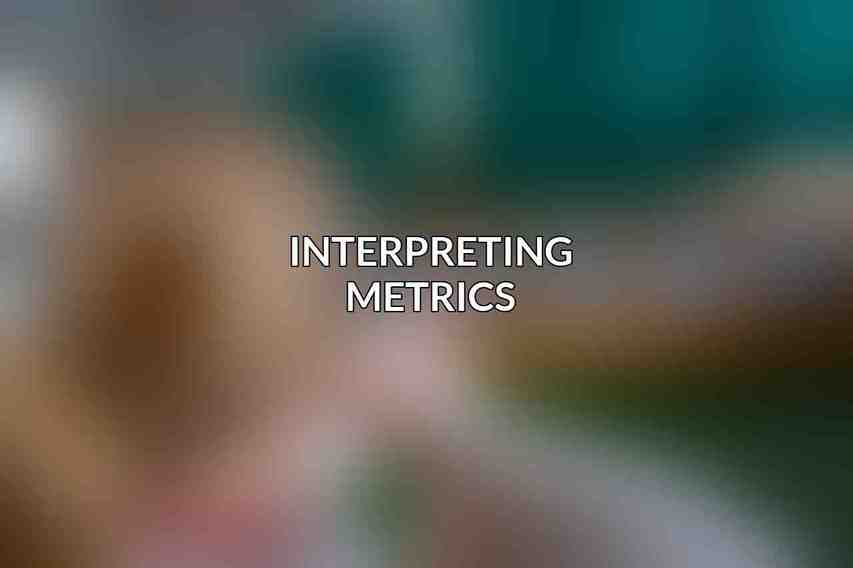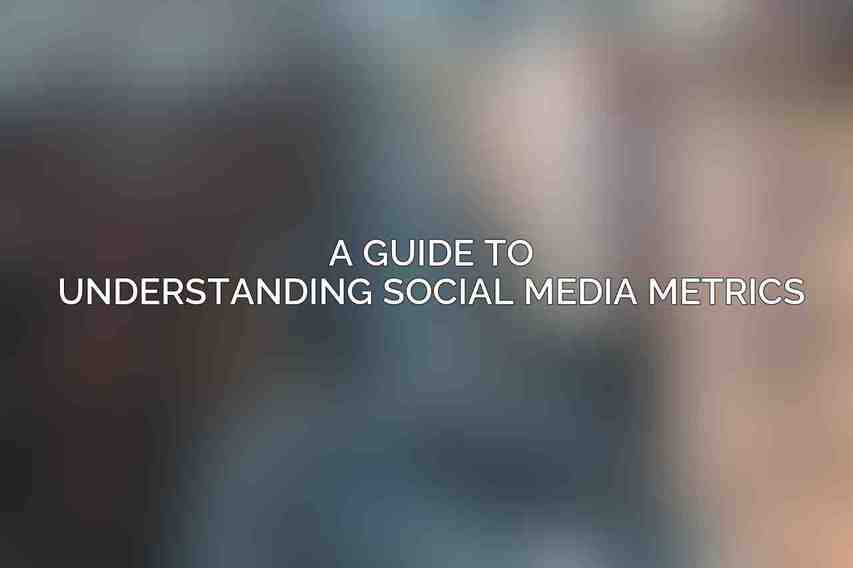Today, social media has become an essential part of marketing strategies for businesses of all sizes. With the vast amount of data generated from social media platforms, understanding and analyzing social media metrics is crucial for optimizing strategies and maximizing Return on Investment (ROI). Social media analytics provide valuable insights that help businesses make informed decisions and enhance their online presence.
Understanding Key Metrics
Engagement Metrics:
When analyzing social media metrics, engagement metrics play a significant role in measuring the effectiveness of your content. Here are some key engagement metrics to focus on:
| Metric | Definition |
|---|---|
| Reach | Number of people who have seen your content |
| Impressions | Number of times your content has been displayed |
| Click-Through Rate | Percentage of users who clicked on your content |
| Engagement Rate | Percentage of users who interacted with your content |
Conversion Metrics:
Conversion metrics are essential for tracking the impact of your social media efforts on generating leads and sales. Some vital conversion metrics include:
- Leads: Number of potential customers generated through social media
- Sales: Number of products or services purchased through social media
- Return on Investment (ROI): Calculation of the return generated from social media campaigns
Brand Metrics:
Monitoring brand metrics is key to understanding how your brand is perceived and recognized within the digital world. Important brand metrics include:
- Brand Awareness: Percentage of users who recognize and recall your brand
- Brand Sentiment: Sentiment expressed towards your brand on social media
- Brand Mentions: Number of times your brand is mentioned online
Interpreting Metrics

Understanding social media metrics goes beyond just tracking numbers; it involves analyzing, comparing, and extracting actionable insights that can drive your strategy forward.
Benchmarks and Comparisons:
To gauge the effectiveness of your social media campaigns, establishing industry benchmarks and comparing your performance to competitors is crucial. Tracking progress over time allows you to identify trends and areas for improvement.
Audience Insights:
Delving into demographic data helps you understand your target audience better. Monitoring engagement rates enables you to identify the type of content that resonates with your followers, allowing you to tailor future content accordingly.
Attribution Modeling:
By identifying the touchpoints where users interact with your brand on social media, you can track the customer journey from initial contact to conversion. Understanding attribution modeling is essential for optimizing your marketing funnel.
Using Metrics to Improve Strategy
Content Optimization:
Analyzing high-performing content formats and topics helps in refining your content strategy to enhance engagement and increase conversion rates. By leveraging data-driven insights, you can create content that aligns with your audience’s preferences.
Audience Targeting:
Utilizing audience insights to customize your content and targeting based on specific demographics and interests can significantly improve engagement and ROI. Running targeted campaigns ensures that your content reaches the right audience at the right time.
Campaign Measurement:
Tracking key metrics for each campaign enables you to measure its effectiveness and identify areas for improvement. By adjusting campaigns based on performance insights, you can optimize your social media strategy for better results.
Competitive Analysis:
Monitoring your competitors’ social media activity provides valuable insights into industry trends and audience preferences. By identifying your competitors’ strengths and weaknesses, you can refine your own strategy for a competitive edge.
Tools for Social Media Analytics

utilizing the right tools can streamline the process of data analysis and reporting.
Native Analytics:
Social media platforms offer built-in analytics tools such as Facebook Insights and Twitter Analytics that provide basic insights into your performance on their respective platforms.
Third-Party Analytics Tools:
For more advanced metrics and comprehensive reporting, third-party analytics tools like Hootsuite, SproutSocial, and Buffer offer in-depth data analysis capabilities, allowing businesses to gain a deeper understanding of their social media performance.
mastering the art of social media metrics is imperative for any business looking to succeed in the digital world. By understanding key metrics, interpreting them effectively, and using them to improve strategy, businesses can optimize their social media efforts, drive engagement, and ultimately, achieve their marketing goals. Remember, the key to success lies in data-driven decision-making and continuous optimization based on valuable social media insights.
Frequently Asked Questions
What are social media metrics?
Social media metrics are data points that provide insights into the performance and results of a social media campaign. They include metrics such as likes, shares, comments, followers, engagement rate, reach, and impressions. Check out our insights into Effective Social Media Scheduling Techniques
Why are social media metrics important?
Social media metrics are important because they help you determine the effectiveness of your social media efforts. By tracking metrics, you can see what is working well and what areas need improvement, ultimately helping you make data-driven decisions to optimize your social media strategy.
What are some key social media metrics to track?
Some key social media metrics to track include engagement rate, reach, impressions, likes, shares, comments, followers growth, click-through rate, conversion rate, and sentiment analysis.
How can I measure social media metrics effectively?
You can measure social media metrics effectively by using social media analytics tools such as Facebook Insights, Twitter Analytics, Instagram Insights, LinkedIn Analytics, and third-party tools like Hootsuite and Sprout Social. These tools provide in-depth data and analysis of your social media performance.
How often should I monitor social media metrics?
It is recommended to monitor social media metrics regularly, ideally on a weekly or monthly basis. This allows you to track trends over time, identify patterns, and make timely adjustments to your social media strategy to improve performance. Get the scoop on our perspective regarding Social Media Strategy for Startups
